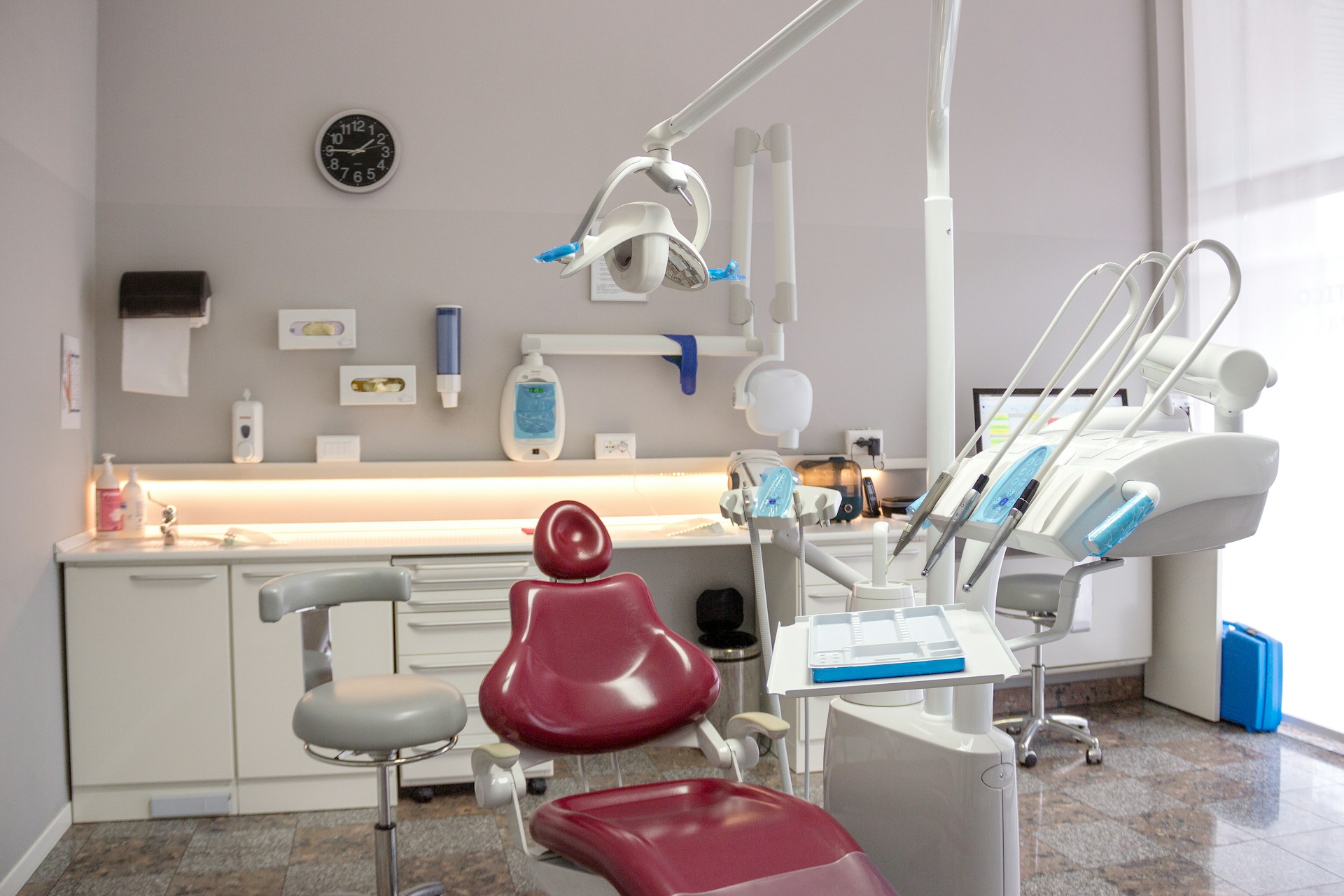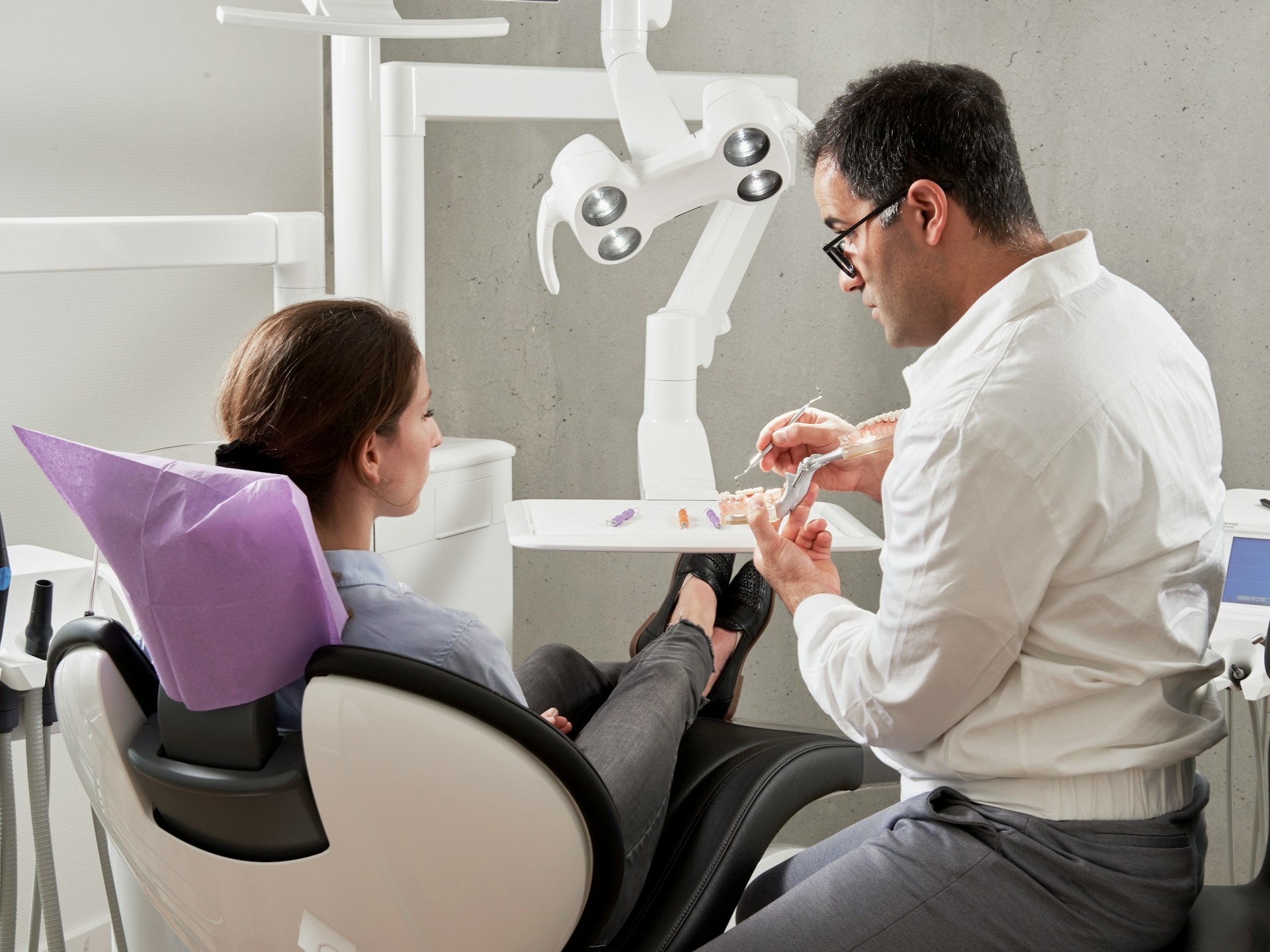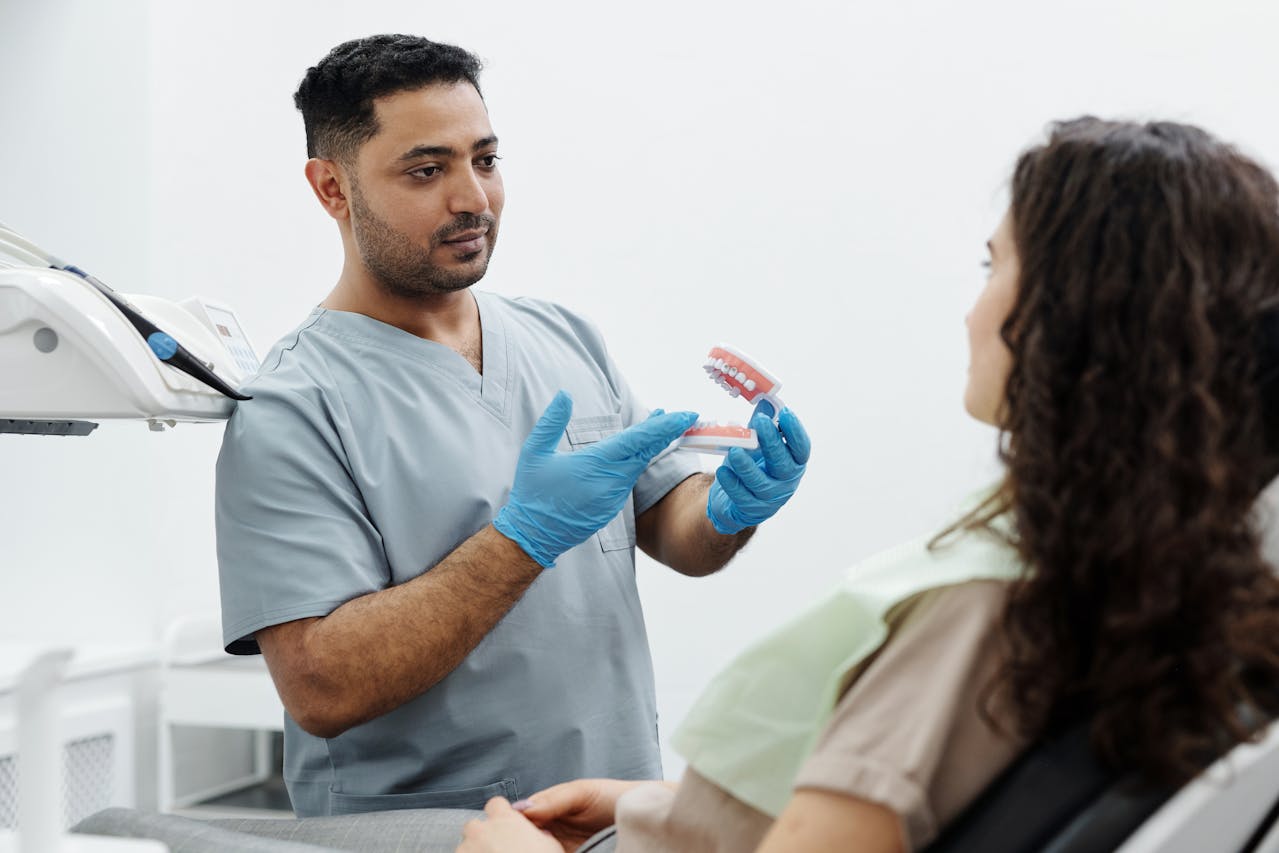Google Paid Ad Strategies For Dental Clinics In Hawaii

For Hawaii dental practices competing in a market with around 51 dentists per 100,000 residents, Google Ads offers immediate visibility to high-intent patients actively searching for dental services. However, even the most perfectly crafted ad campaign fails if calls go unanswered during lunch breaks, after hours, or when your front desk is overwhelmed. That's where an AI receptionist for dental practices becomes essential—ensuring every lead generated by your Google Ads investment converts into a scheduled appointment, 24/7.
Key Takeaways
- Native Hawaiian and Other Pacific Islander adults have 42.0% and 49.6% rates of no dental visits in the past year, respectively, compared to 18.9% for Chinese adults
- Most dental practices see $50–$85 cost per lead (CPL) on Google Ads, with new patient acquisition (CPA) typically $175–$325, depending on specialty and market.
- Your landing pages need to convert the visitors that your ads bring in, particularly on mobile devices, which account for 68% of dentistry searches.
- In Hawaii's premium market, a well-planned budget guarantees that your Google Ads investment yields the highest possible return.
- Google Ads does not automatically comply with HIPAA because it does not enter into Business Associate Agreements with healthcare advertising, necessitating meticulous campaign planning.
1. Understand Hawaii's Unique Dental Market Landscape
Hawaii's dental market differs significantly from the mainland U.S. due to geographic isolation, higher costs, and unique demographics. These factors directly impact your Google Ads strategy.
Key Hawaii Market Factors:
- Higher Competition Density: With 3,417 residents per general dental practice (better than the U.S. average of 3,673), Hawaii's market is relatively competitive, requiring strategic differentiation in your ads.
- Elevated Operating Costs: Hawaii's cost of living is approximately 80% higher than the national average, which affects both your practice overhead and advertising costs—expect CPCs to be 15-30% higher than mainland averages.
- Multi-Island Geography: Each major island (Oahu, Maui, Big Island, Kauai) functions as a separate market, requiring careful campaign structuring to avoid wasted spend on inter-island searches where patients cannot realistically travel.
- Diverse Demographics: Hawaii has significant Native Hawaiian, Asian, and Pacific Islander communities, with varying dental care utilization rates—Native Hawaiian and Other Pacific Islander adults have 42.0% and 49.6% rates of no dental visits in the past year, respectively, compared to 18.9% for Chinese adults.
Hawaii-Specific Advertising Implications:
- Set separate campaigns for each island location with precise geographic targeting
- Budget 15-30% above mainland recommendations to account for higher costs
- Develop culturally appropriate messaging for diverse populations
- Focus on accessibility and insurance messaging for demographics with higher dental avoidance rates
2. Set Up Google Local Service Ads (LSAs) for Maximum Visibility
Google Local Service Ads appear at the very top of search results above standard Google Ads and operate on a pay-per-lead basis rather than pay-per-click, making them highly cost-effective for Hawaii dental practices.
LSA Requirements and Benefits:
- Google Guaranteed Badge (soon to be Google Verified): Requires background checks, license verification, and insurance verification, enhancing your practice's trustworthiness
- Pay-Per-Lead Model: You only pay when a potential patient contacts you through the ad, not for clicks
- Premium Placement: Appears above all other ads and organic results
- Lead Management: Includes built-in review and dispute management systems
Hawaii-Specific LSA Implementation:
- Set service areas carefully for each Hawaiian island—avoid setting service areas that include multiple islands unless you specifically serve patients from multiple islands
- Ensure your business hours accurately reflect Hawaii time zones
- Respond to leads immediately—LSA leads expect quick responses, and Arini's AI Receptionist Platform ensures 24/7 availability to answer LSA leads immediately, preventing missed opportunities from time-zone differences or after-hours inquiries
3. Structure Your Google Ads Account for Hawaii Success
Proper account structure is foundational to campaign success, especially in Hawaii's unique multi-island market.
Recommended Account Structure:
- Campaign Level: Organize by island (Oahu, Maui, Big Island, Kauai) or by service type (General Dentistry, Cosmetic, Emergency)
- Ad Group Level: Group tightly related keywords (e.g., "emergency dentist Honolulu," "tooth pain dentist Honolulu," "urgent dental care Honolulu")
- Ad Level: Create multiple responsive search ads per ad group with Hawaii-specific messaging
Hawaii-Specific Setup Tips:
- Set your account timezone to Hawaii (HST)
- Implement location extensions for each physical location
- Use call extensions with tracking numbers to measure phone conversions
- For multi-location practices, leverage Arini's Integration & Workflow Customization Module to support custom routing rules that direct leads from different islands to the appropriate practice location
4. Master Keyword Research for Hawaii Dental Searches
Effective keyword research targets high-intent searches specific to Hawaii's geography and demographics.
High-Value Hawaii Keyword Categories:
- Emergency Keywords: "emergency dentist Honolulu," "tooth pain Maui," "urgent dental care Big Island"
- Insurance Keywords: "dentist accepting HMSA," "HMAA dental provider Oahu," "TRICARE dentist Hawaii"
- Island-Specific Keywords: "dentist in Kailua," "Kauai family dentist," "Waikiki cosmetic dentist"
- Tourist Keywords: "temporary dental care Hawaii," "vacation dentist Honolulu," "dental emergency for tourists"
Negative Keyword Strategy:
Implement comprehensive negative keyword lists to avoid wasted spend on irrelevant searches:
- Dental jobs: "dental assistant," "dental hygienist jobs," "dental office employment"
- Dental education: "dental school," "dental degree," "dental courses"
- Price-sensitive searches: "free dental," "cheap dentist," "low cost dental"
- Non-dental terms: "crown molding," "tooth fairy," "dental plan" (if you don't offer membership plans)
The average cost-per-click for dental keywords ranges from $6.50-$9.75 in competitive markets, making negative keywords critical to control costs.
5. Optimize Geographic Targeting Across Hawaiian Islands
Hawaii's unique geography requires sophisticated targeting strategies to maximize ad spend efficiency.
Island-by-Island Targeting Approach:
- Oahu: Target specific neighborhoods or zip codes (Honolulu, Hawaii Kai, Windward side) rather than the entire island due to traffic and commute challenges; consider radius targeting of 10-15 miles maximum
- Maui: Separate campaigns for West Maui (Lahaina, Kaanapali) and South Maui (Kihei, Wailea) as they function as distinct markets
- Big Island: Create separate campaigns for the Hilo side and the Kona side, as crossing the island takes significant time
- Kauai: Target the entire island with radius targeting around your location, as the island is smaller but still requires precise geographic boundaries
Advanced Geographic Strategies:
- Adjust bids for tourist vs. resident areas—higher bids in tourist-heavy areas for emergency services, higher bids in residential areas for family and preventive care
- Use location bid adjustments based on conversion performance by area
- Implement separate campaigns for specialized services worth traveling for (e.g., full-arch dental work, complex implant cases) that may attract patients from other islands
6. Create High-Converting Ad Copy for Hawaii Audiences
Compelling ad copy that resonates with Hawaii residents and visitors is essential for maximizing click-through rates and conversions.
Hawaii-Specific Ad Copy Elements:
- Local Trust Signals: Mention local affiliations, years serving the community, or Hawaii-specific credentials
- Insurance Mentions: Include Hawaii-specific insurance providers like "Accepting HMSA, HMAA, and TRICARE"
- Cultural Considerations: Use appropriate language and messaging that respects Hawaii's diverse cultural heritage
- Urgency Triggers: "Same-day emergency appointments available" or "Limited availability—book now"
Essential Ad Extensions:
- Call Extensions: Feature prominently, as 68% of dental searches occur on mobile devices
- Location Extensions: Show your practice location with distance to the searcher
- Sitelink Extensions: Link to specific service pages (Emergency, New Patients, Insurance)
- Callout Extensions: Highlight unique selling points ("24/7 Emergency Line," "Family Friendly," "Free Consultations")
To maximize ad ROI, ensure every click that generates a phone call is answered immediately with Arini's Call Answering & Scheduling Module, even during lunch or after hours.
7. Design Conversion-Optimized Landing Pages
Your landing pages must convert the traffic your ads generate, especially on mobile devices, where 68% of dental searches occur.
Essential Landing Page Elements:
- Fast Load Speed: Under 2 seconds for mobile users
- Clear Call-to-Action: Prominent "Call Now" button and online booking option
- Trust Signals: Reviews, before/after photos (with proper disclosure), credentials
- Insurance Information: Clear listing of accepted Hawaii insurance plans (HMSA, HMAA, etc.)
- Mobile Optimization: Responsive design with easy-to-tap elements
Hawaii-Specific Landing Page Content:
- Address common Hawaii-specific concerns (travel between islands, military family needs, tourist emergencies)
- Include local testimonials from Hawaii residents
- Feature team photos showing your Hawaii-based staff
- Provide clear directions from major landmarks or neighborhoods
Arini's Patient FAQ & Communication Module reduces landing page bounce by providing instant answers to common insurance and billing questions via embedded chat or click-to-call, keeping potential patients engaged.
8. Implement Strategic Budgeting and Bidding
Effective budgeting ensures your Google Ads investment delivers maximum return in Hawaii's premium market.
Recommended Budget Guidelines:
- Minimum Budget: $750-1,500 monthly to generate 5-10 clicks per day
- Competitive Honolulu Market: $2,000-5,000+ monthly due to higher competition
- Neighbor Islands: $1,000-2,000 monthly may achieve results due to less competition
- Daily Budget: $25-50 minimum to allow Google's algorithm to optimize
Cost Management Strategies:
- Calculate acceptable cost per new patient based on lifetime value ($5,500-$7,500 average)
- Allocate higher budgets to high-value procedures (implants, Invisalign, cosmetic) that justify higher acquisition costs
- Use automated bidding strategies like Target CPA or Maximize Conversions once you have conversion data
- Monitor search term reports weekly to identify and exclude irrelevant terms
The average cost per lead for dentists using Google Ads falls between $50 and $85, with new patient acquisition costs ranging from $175-$325, depending on specialty and location.
9. Track Conversions and Measure ROI Accurately
Without proper tracking, you can't optimize your campaigns or prove ROI—critical for justifying your advertising spend.
Essential Tracking Setup:
- Call Tracking: Implement call tracking numbers to measure phone conversions
- Form Submission Tracking: Track online appointment requests
- Google Analytics 4: Connect to measure user behavior and attribution
- Conversion Value Tracking: Assign monetary values to conversions based on service type
Hawaii-Specific ROI Metrics:
- Island Performance: Track which islands generate the highest ROI
- Service Profitability: Measure which services deliver the best return
- Seasonal Trends: Monitor performance during tourist seasons vs. resident-focused periods
- Insurance Impact: Track conversion rates by insurance type (HMSA, HMAA, TRICARE, etc.)
Arini's Analytics & Notifications Module provides integrated call analytics and appointment attribution, enabling the measurement of exact ROI from Google Ads campaigns and showing the production value per dollar spent.
10. Ensure HIPAA Compliance in Your Advertising
Google Ads is not HIPAA compliant out of the box since Google doesn't sign Business Associate Agreements with healthcare advertisers, requiring careful campaign structuring.
HIPAA Compliance Best Practices:
- Redact PHI: Ensure conversion tracking doesn't collect protected health information
- Avoid Health-Specific Audiences: Don't use lookalike audiences based on patient data
- General Targeting: Use broad demographic targeting instead of health condition targeting
- Landing Page Compliance: Include HIPAA compliance statements on landing pages
- Data Minimization: Only collect essential information in forms
Compliant Conversion Tracking:
- Track appointment requests without collecting detailed health information
- Use generic conversion names like "Appointment Request" rather than "Implant Consultation"
- Ensure form fields don't ask for detailed medical history in initial contact forms
- Implement secure, HIPAA-compliant form processing
11. Integrate Google Ads with Practice Operations
The final step to maximize Google Ads ROI is seamless integration with your practice operations, ensuring that no leads are lost.
Operational Integration Checklist:
- PMS Integration: Connect your practice management system (OpenDental, Dentrix, EagleSoft) to automatically schedule appointments from ad leads
- After-Hours Coverage: Implement 24/7 call answering to capture leads outside business hours
- Lead Response Protocol: Establish immediate follow-up procedures for high-intent leads
- Staff Training: Ensure front desk staff can handle calls generated by specific ad campaigns
Arini's AI Receptionist Platform captures and converts Google Ads leads 24/7 by answering calls immediately, booking appointments into OpenDental, Dentrix, or EagleSoft, and eliminating missed opportunities from high-intent searches.
Frequently Asked Questions
Q: What is the average cost per click for dental keywords in Hawaii?
A: The average cost-per-click for dental keywords in Hawaii typically ranges from $6.50-$9.75, which is 15-30% higher than mainland averages due to Hawaii's elevated cost of living. High-value keywords like "dental implants" may cost even more, while general terms like "dentist near me" may be on the lower end of this range.
Q: How do Google Local Service Ads differ from regular Google Ads for dentists?
A: Google Local Service Ads (LSAs) operate on a pay-per-lead basis rather than pay-per-click, appearing at the very top of search results above standard Google Ads. LSAs require Google screening, including background checks and license verification, and you only pay when a potential patient contacts you through the ad, not for clicks. This makes LSAs potentially more cost-effective for practices in competitive markets like Hawaii.
Q: Should Hawaii dental practices target tourists or residents with Google Ads?
A: Most Hawaii dental practices should primarily target residents, as they represent the majority of consistent, long-term patients. However, practices in high-tourist areas (like Waikiki or resort areas) should consider separate campaigns targeting tourists for emergency services. The key is to clearly differentiate messaging—residents need comprehensive care, while tourists need temporary emergency solutions.
Q: What are the most important conversion metrics for dental Google Ads campaigns?
A: The most critical metrics are cost per lead ($50-85 average), new patient acquisition cost ($175-325), conversion rate (4.2% average for dental ads), and return on ad spend (target 300-500% ROI). Additionally, track call volume, appointment show rates, and patient lifetime value to fully understand campaign effectiveness.
Q: How can AI receptionists improve Google Ads ROI for dental practices?
A: AI receptionists improve Google Ads ROI by ensuring 100% of calls from ads are answered immediately, even after hours or when staff are busy. This prevents lead leakage from missed calls, captures high-intent patients at their moment of interest, and books appointments directly into your practice management system—converting your ad spend into actual revenue-generating appointments.









